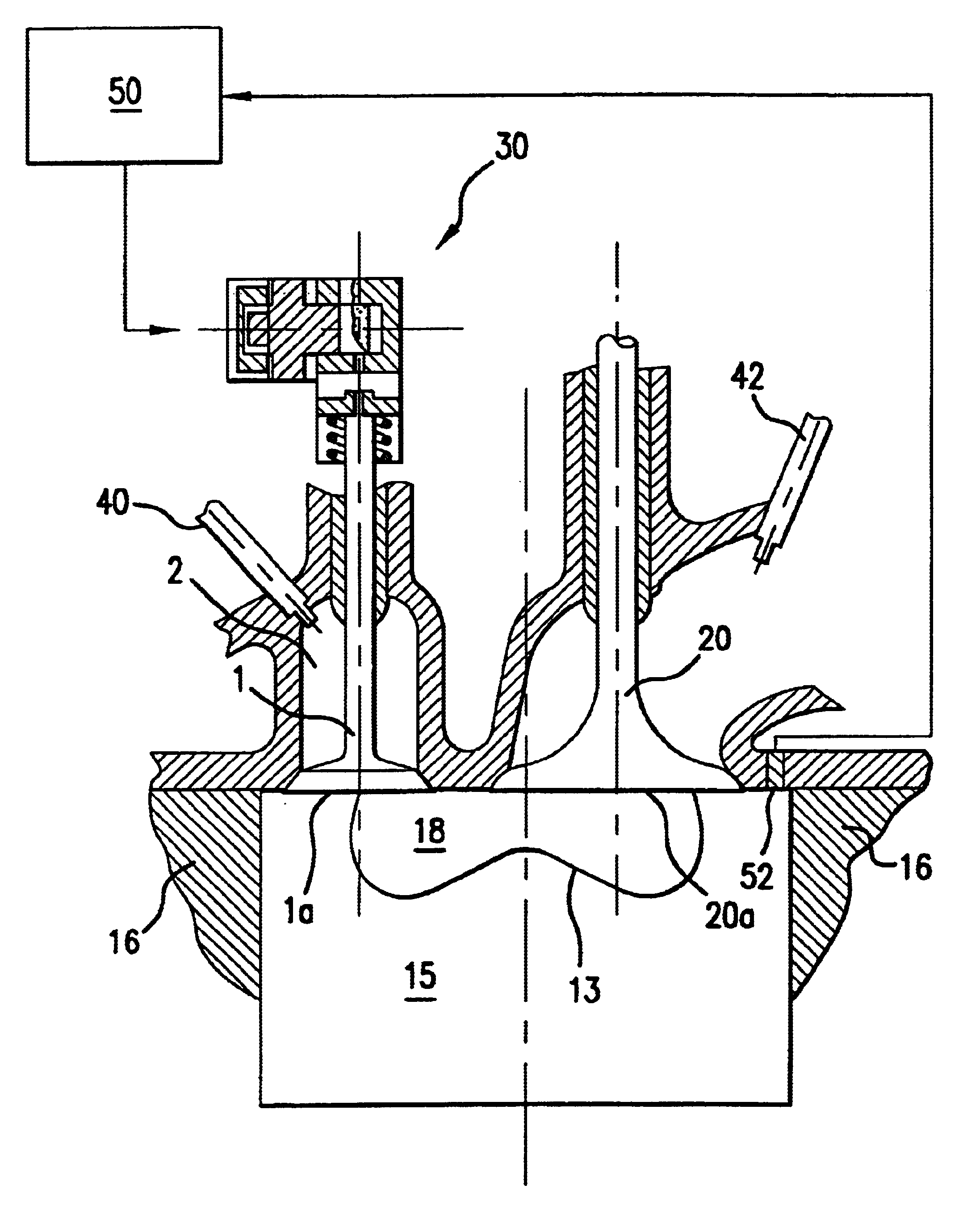HCCI engine with combustion-tailoring chamber
a technology of combustion tailing and engine, which is applied in the direction of machines/engines, mechanical equipment, non-mechanical valves, etc., can solve the problems of egr control, too long response time, and limited hcci operation reported by egr as control, and achieve the effect of fast control of the hcci combustion process
- Summary
- Abstract
- Description
- Claims
- Application Information
AI Technical Summary
Benefits of technology
Problems solved by technology
Method used
Image
Examples
Embodiment Construction
[0022]FIG. 1 shows a first preferred embodiment of the present invention in the form of a reciprocating internal combustion engine which includes a combustion-tailoring chamber (CTC) 2 in the cylinder head 14. Piston 15 is provided with a piston bowl 13 in its face forming the main combustion chamber. The volume of the chamber 2 can be from 5 to 70% of the volume of piston bowl 13. There is a valve 1 between the chamber 2 and the main combustion chamber. The area of the surface 1a of valve 1 is equal to or smaller than that of surface 20a of the intake valve 20. The piston 15 is one of plural pistons drivably connected to an engine crankshaft 53. A sensor 52 monitors combustion chamber pressure and a sensor 54 monitors engine speed and / or crank angle.
[0023]The valve 1 is controlled electro-hydraulically by a control unit 30 responsive to signals from a controller 50. Hydraulic fluid with pressure on the order of 2000 psi is provided to the control unit inlet 7. To open the valve 1, ...
PUM
 Login to View More
Login to View More Abstract
Description
Claims
Application Information
 Login to View More
Login to View More - R&D
- Intellectual Property
- Life Sciences
- Materials
- Tech Scout
- Unparalleled Data Quality
- Higher Quality Content
- 60% Fewer Hallucinations
Browse by: Latest US Patents, China's latest patents, Technical Efficacy Thesaurus, Application Domain, Technology Topic, Popular Technical Reports.
© 2025 PatSnap. All rights reserved.Legal|Privacy policy|Modern Slavery Act Transparency Statement|Sitemap|About US| Contact US: help@patsnap.com



